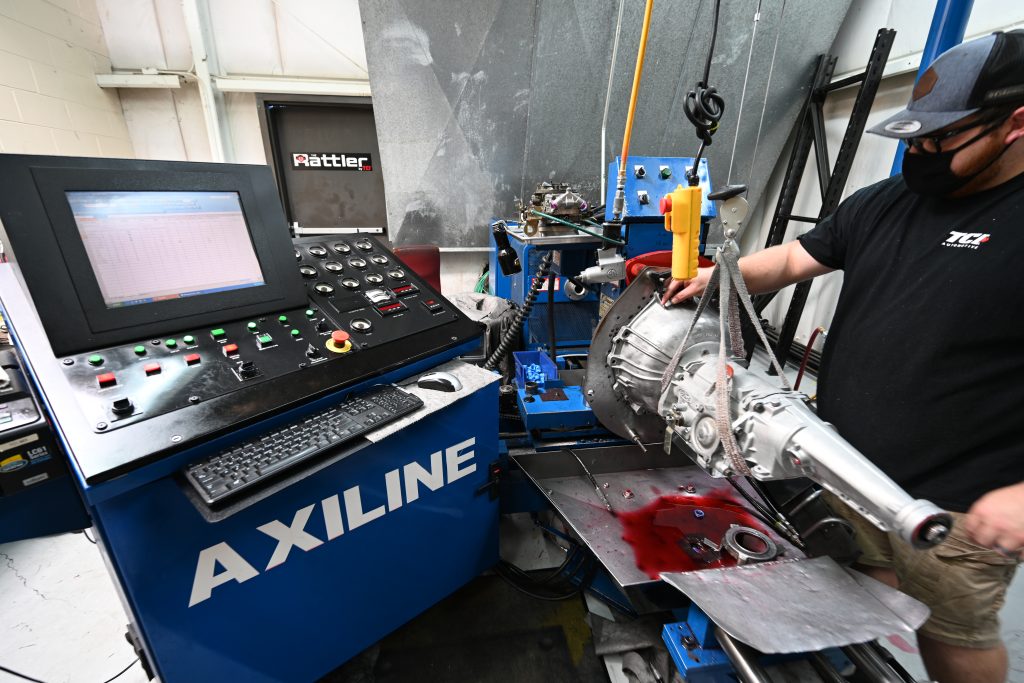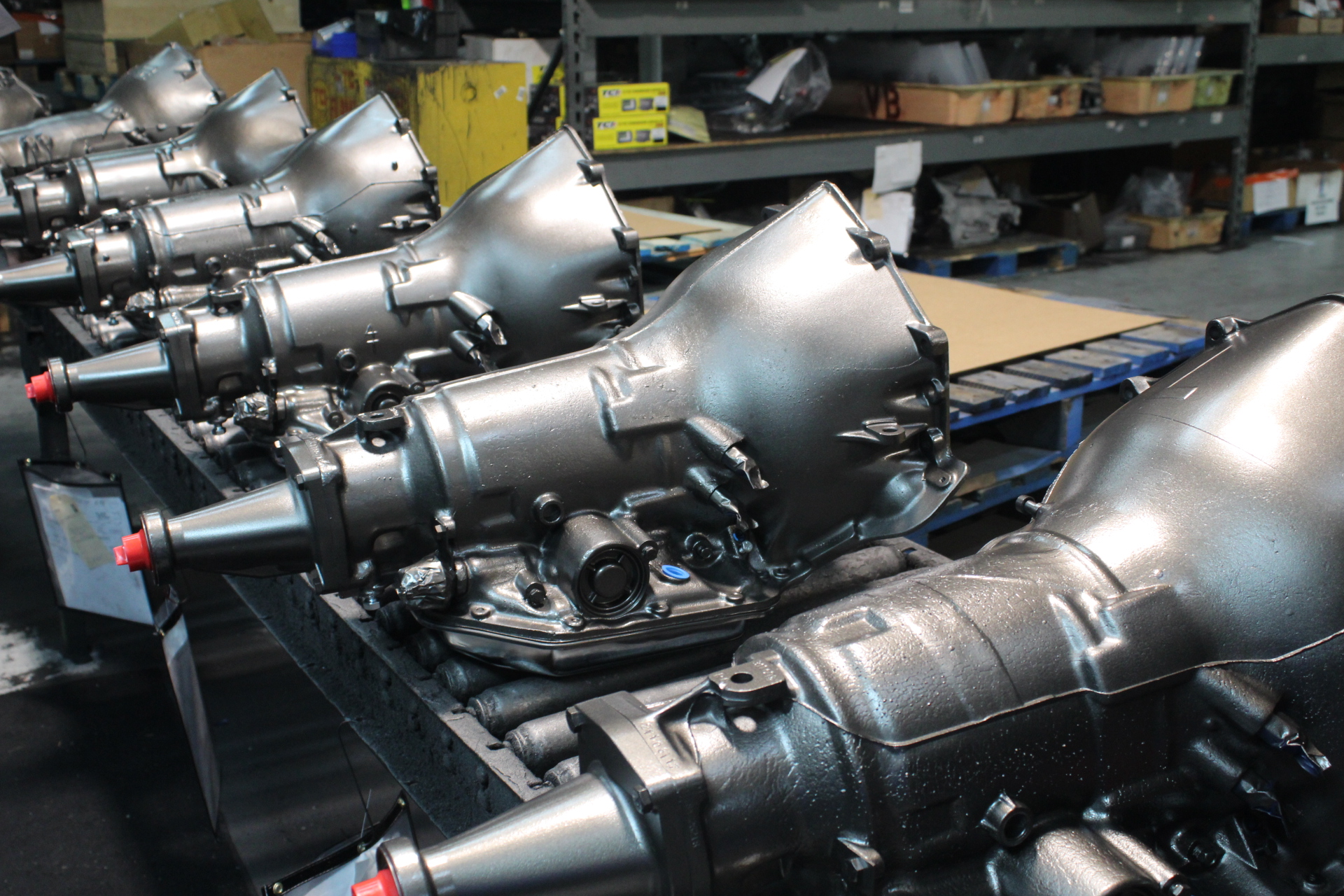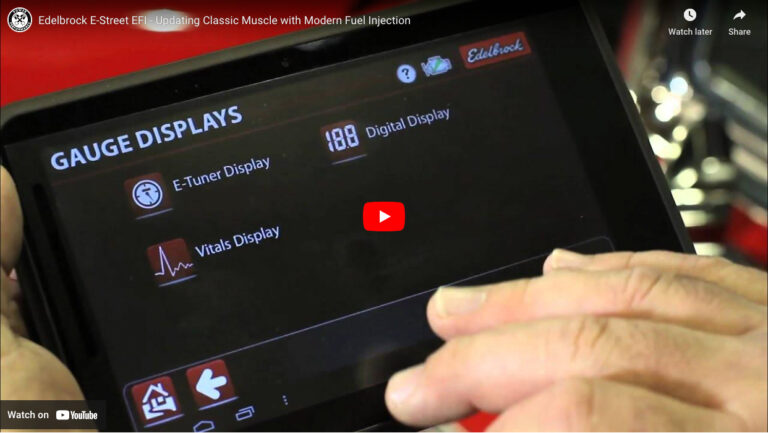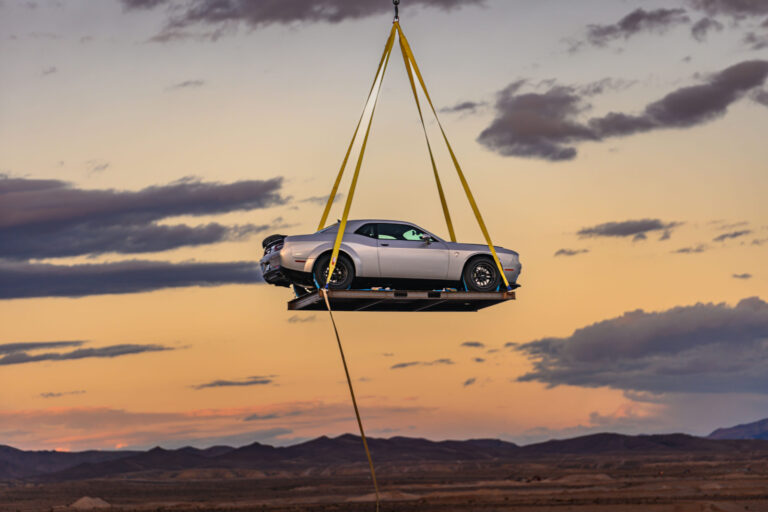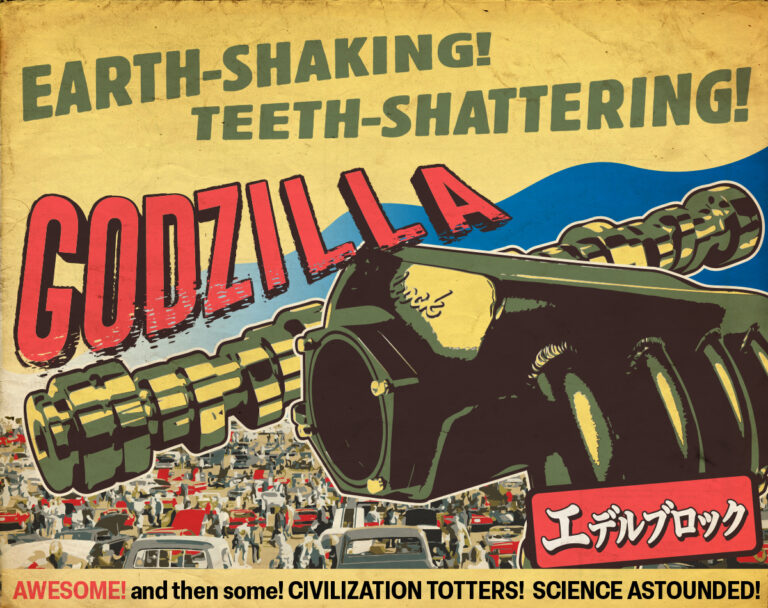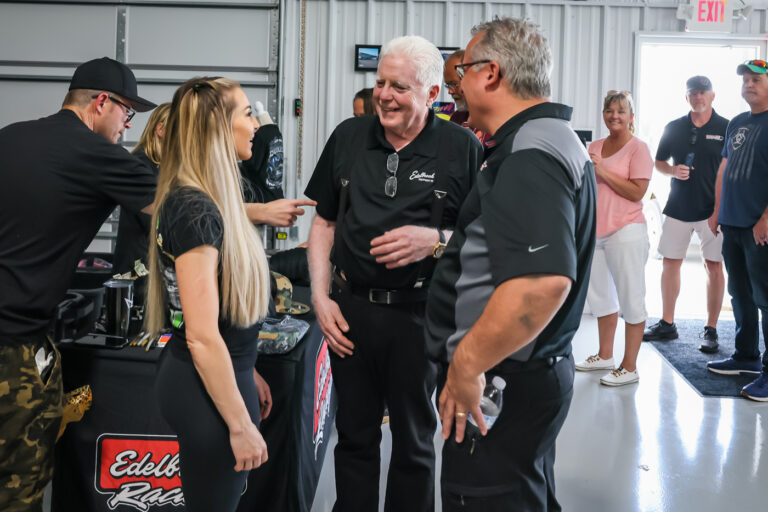It’s that time of year! No, we’re not talking about the kids going back to school. While that is important, we’re talking about liberating your project car (or race car) from its parking spot in the garage before it becomes a permanent fixture. Car folks are often accused of procrastinating, but most of us don’t build a car often enough to know the order of things. In a perfect world, we’d have money flowing out of our pockets and could order everything at once, but that is rarely the case. After speaking with TCI Automotive’s Scott Miller, we found people should put the transmission further ahead in their project timeline.
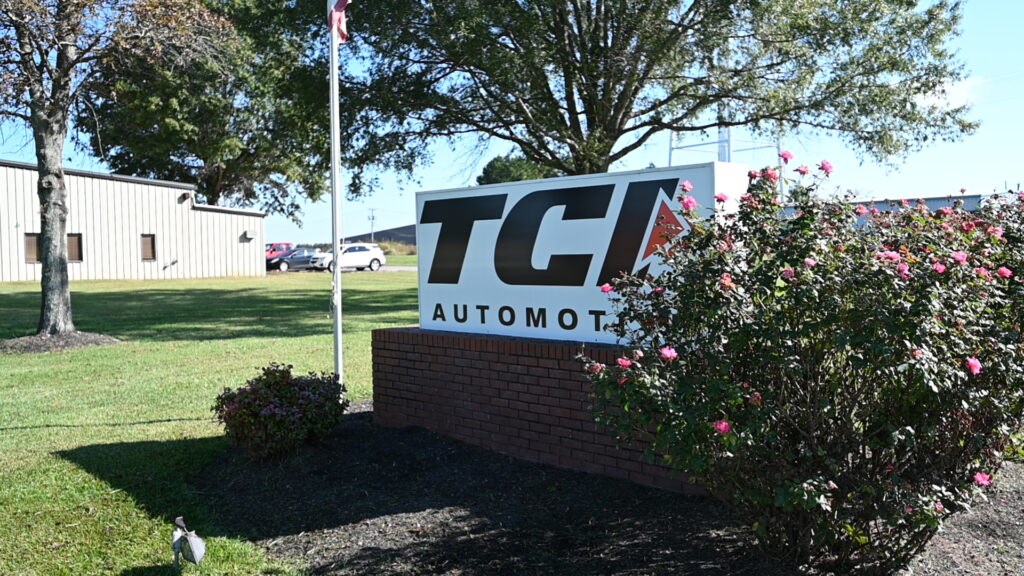
We were initially perplexed by the statement, but it makes sense when you think about it. Even if you don’t plan to be doing burnouts by month’s end, having the transmission early in the process will save you many heartaches later. The transmission is in the middle of the car, which dictates where many pieces will be positioned. Ordering a transmission earlier will make you think deeper into the build before you start. It will make you think about almost every aspect of your project and give you a clearer picture of the type of car you want in the end.
TCI has a great recommendation form on its website that helps you reach your goals. Though it is geared toward a racing setup, most of the same information applies to a street car. To make your life a little easier, we thought we’d go through the form section by section to help define some aspects to consider, not only when looking for a transmission or torque converter but also about your build in general.
Contact Information

The first section is simple. It is just your contact information and whether you are looking for a transmission, torque converter, or both. The second section contains self-explanatory vehicle information like year, make, and model, but then it delves a little deeper and gets you thinking.
Vehicle Information
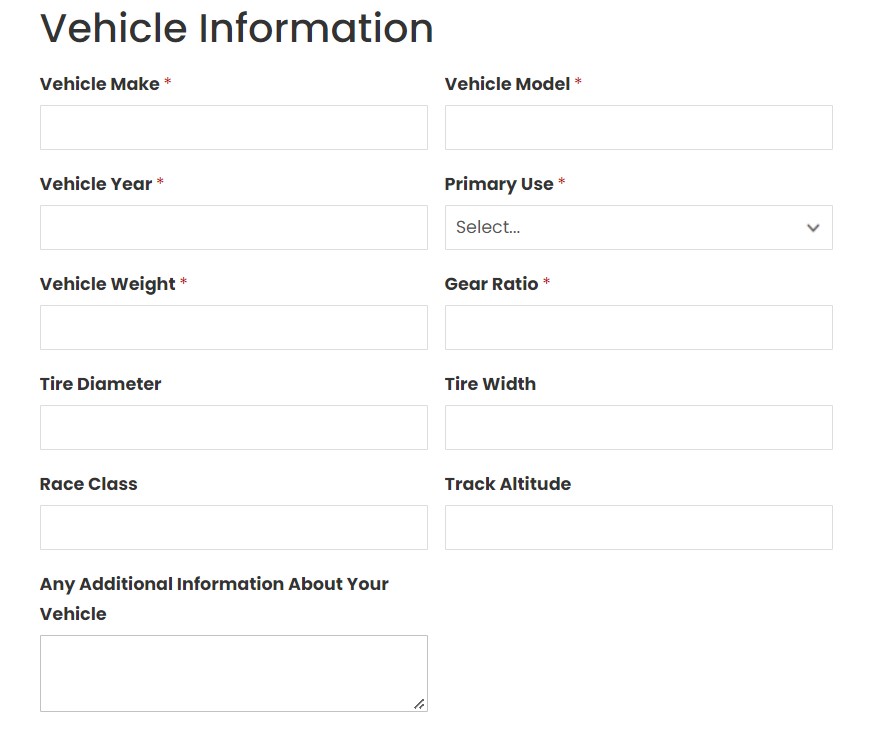
What is the vehicle’s primary use?
The TCI tech will use this field to determine how beefy the internals need to be. Obviously, the needs will differ for a street car versus a monster truck, so you need to know the project’s overall goal. Choices here include street/strip, towing, ¼-mile drag racing, ⅛-mile drag racing, sand drag racing, circle track, off-road 4×4, Monster Truck, or Other.
What is the vehicle weight?
Vehicle weight will play a large part in determining what type of transmission and the internals needed to support the project’s goals. You can get creative if you don’t know the weight and don’t have access to scales.
You can search online and find the curb weight if the car is stock. Or, if you have a truck stop or highway weigh station nearby, you can ask them if you can cross the scales when they’re not busy — many of them don’t mind helping a hot rodder. Even if the car isn’t drivable, you can weigh it along with the truck/trailer, then take the car off, go back over it and subtract the number. It’s a lot of work, but we’ve done it, and most truck scales are accurate within ten pounds.
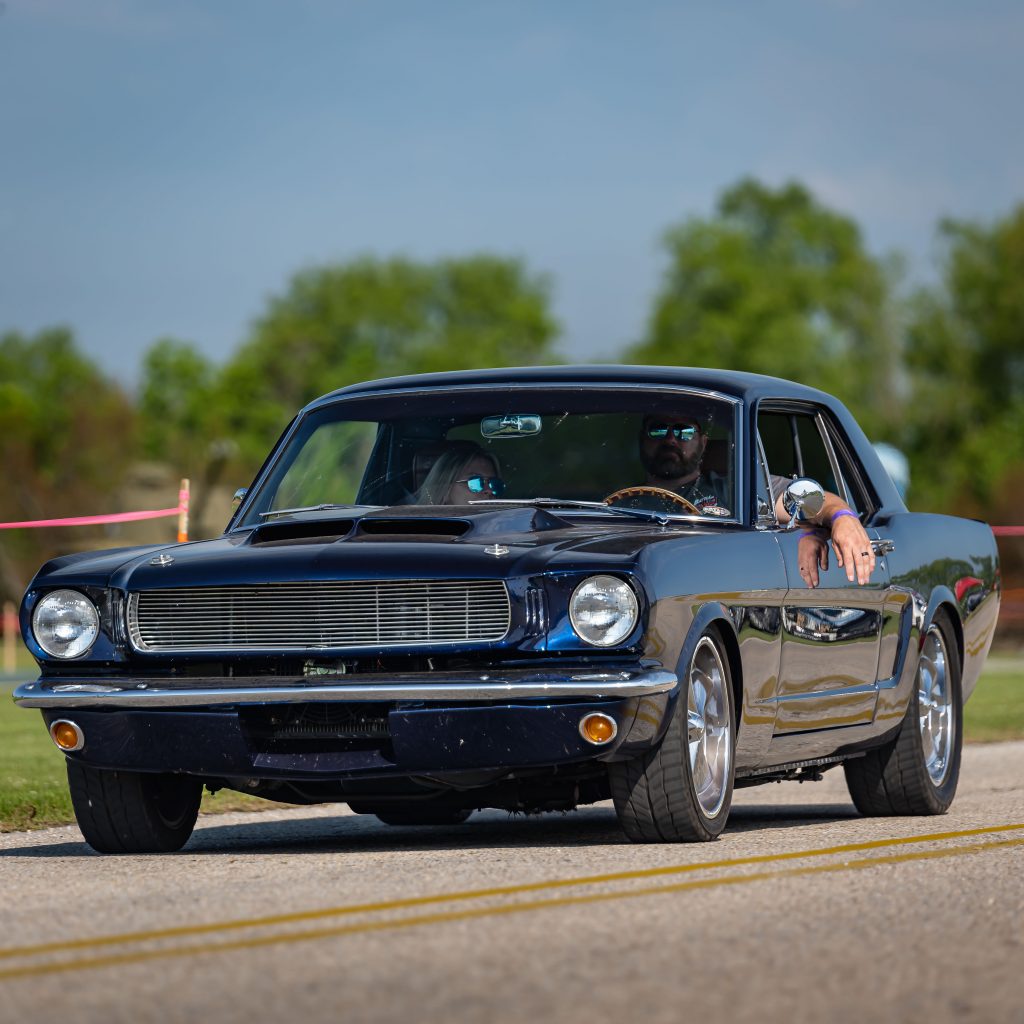
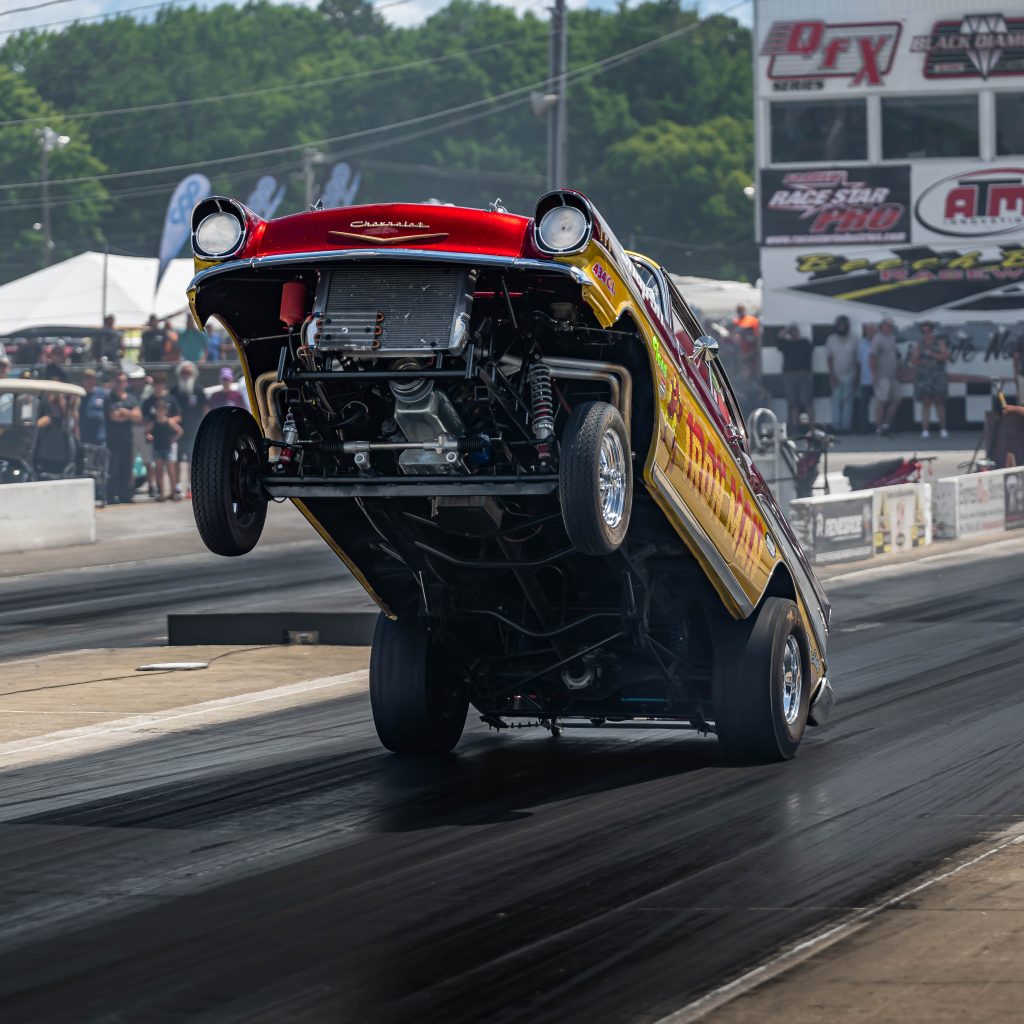
What gear ratio?
This is the rearend gear ratio, not the final drive ratio. Mostly, this will depend on what you are doing with the vehicle. If you want to be a long hauler on the Power Tour, you’ll blow the engine before the second stop with a shorter 7.17:1 rear gear. Likewise, if you are trying to jump a truck over a stack of cars, you aren’t going to choose a 2.08:1 ratio because you need to get it moving quickly. The lower (taller) the first number is, the lower the RPM is in high gear.
The other consideration affecting the final drive ratio is tire diameter, so choosing the gear ratio will go hand in hand with the next step.
What is the tire diameter?
As mentioned above, tire diameter plays a significant role in your rearend gear ratio selection, but it also plays into gear ratios within the transmission. For instance, if you are looking for a cruiser with good highway mileage and choose a tall gear ratio (say 3.08:1), you will need a shorter first gear to get the car moving without falling on its face. Likewise, if you are a drag racer, you want that shorter gear to move the car quickly, but you also don’t want to run out of RPM on the top end or risk blowing the engine.
Tire diameter is often dictated by the wheel well in a street car, but you’ll see drag racers put in tubs for a wider or taller tire. TCI has a terrific Racing Calculator page that can help determine the optimum tire height and rear gear ratio. You’ll want to bookmark that page whether you are a racer or not! This is a great way to theoretically see your effective gear or final-drive ratio as you change tire size or rear gear.
Note: One of the parameters referenced in a few calculations is “Converter Slip Percentage.” Scott Miller explained that this is something racers can data log. For our purposes here, you can just use a ballpark percentage. If you use a lockup overdrive, the percentage is zero. If you have a street car with a non-overdrive trans, you can use 5 to 6%. For racers with a non-overdrive, you would be shooting for 2 to 3%.
What is the tire width?
You might wonder why tire width would play into the equation of building a transmission when all it does is propel a car forward. Well, it probably doesn’t play a huge role for most, but the focus here is grip. Too much or too little can determine what the transmission/torque converter needs to do to compensate for the situation. If you have 1,000 horsepower and a 10-inch tire patch, you will have to compensate somehow to keep from blowing the tires off it every time you step on the pedal. Something will need to change, whether you change the ratio at the trans or the rear.
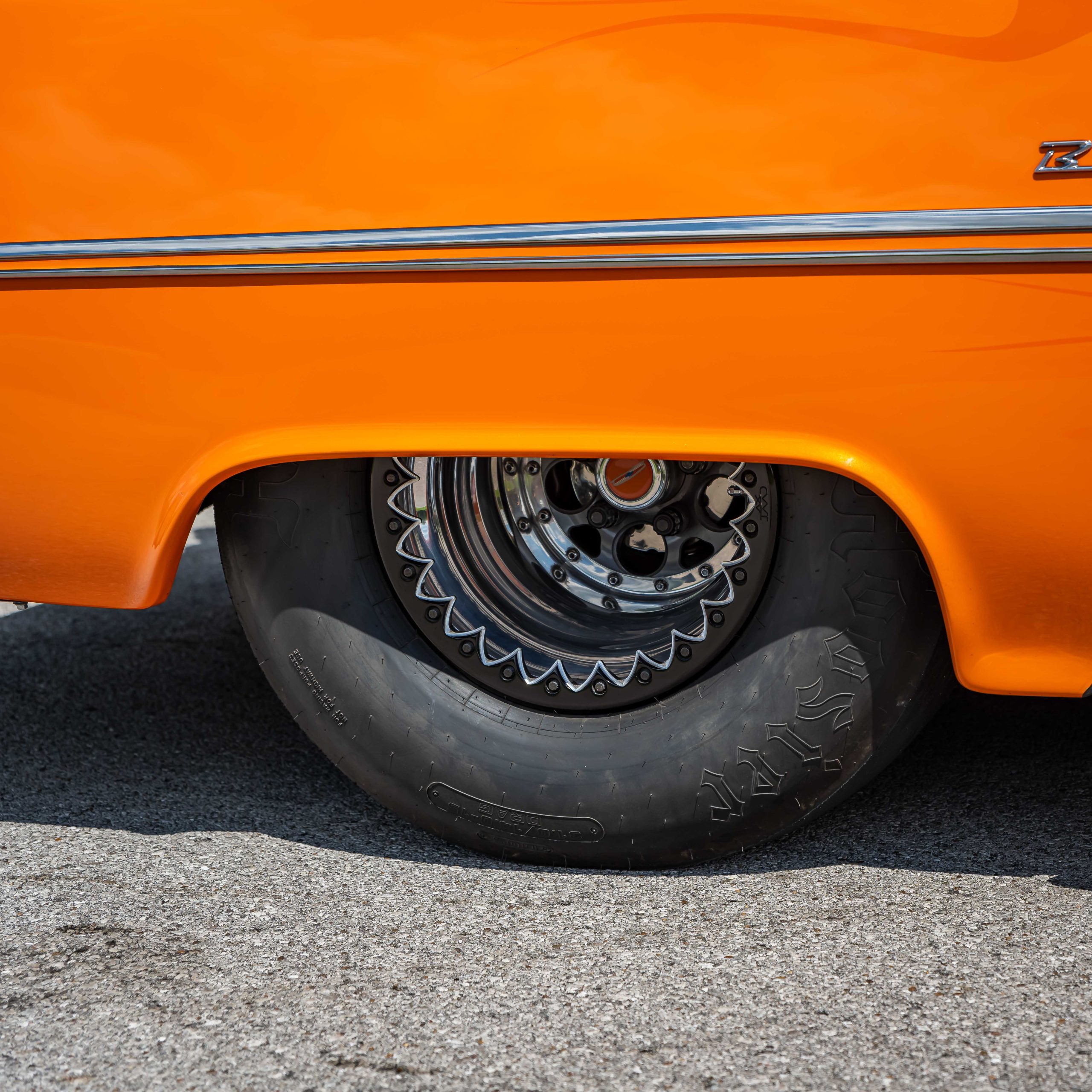
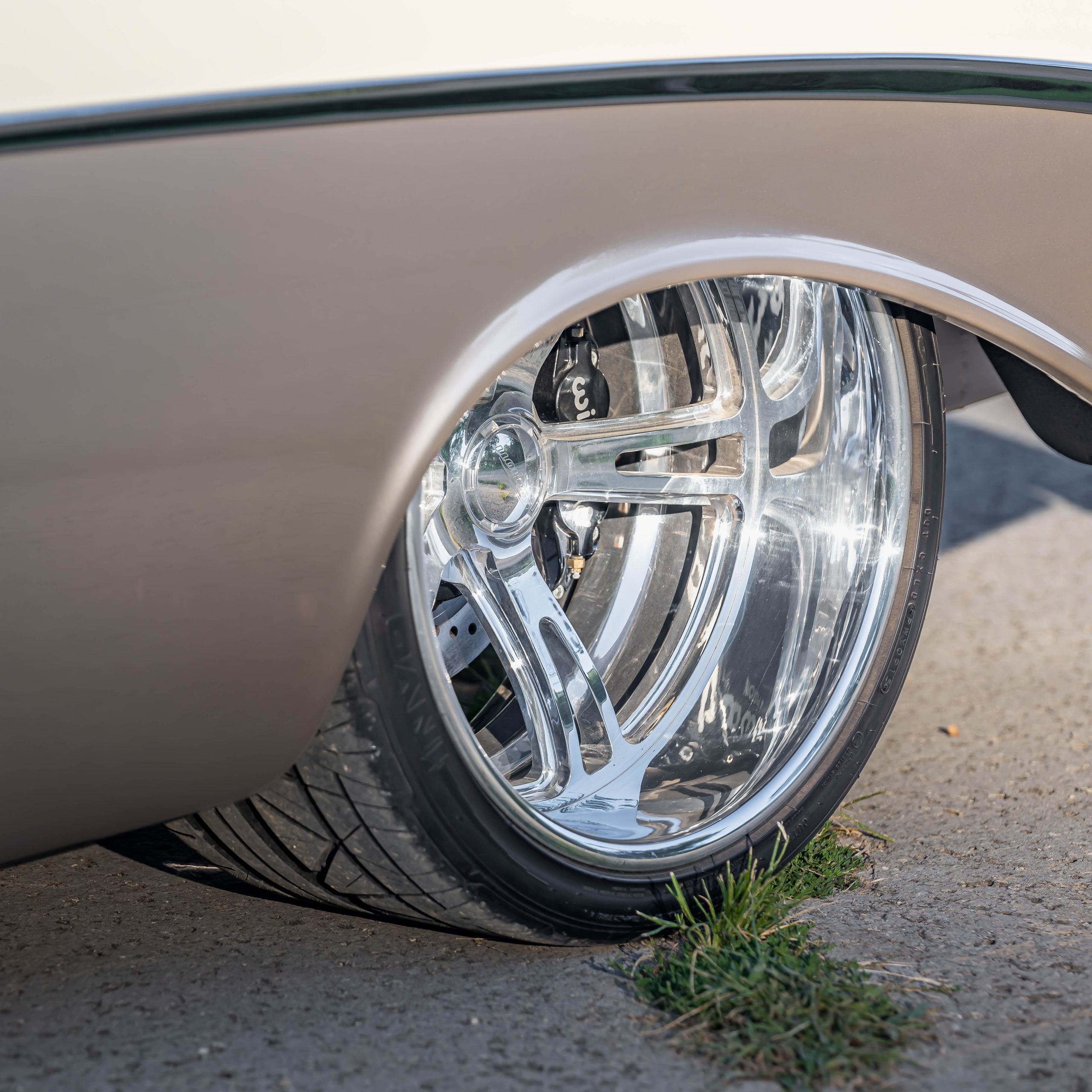
Race Class/Track Altitude
These two fields are geared directly towards racers, but if you have a carbureted street car and live most of your time at a significant height above sea level, it might be good to let the tech know so they can factor that into the equation. A slightly shorter gear might help keep the car from bogging when leaving a traffic light. Or you may need a little shorter rear gear to climb the mountains. You also might need a trans cooler, especially if towing in those conditions.
Any Additional Information About Your Vehicle
Of course, this section is a catch-all, but use this space to let the tech know anything unique about your situation. Buying a transmission is just like building an engine. There are thousands of combinations to meet different needs and thousands of ways to arrive at the same endpoint. The more the tech knows ahead of time, the more educated recommendation they can make to you. Likewise, this will force you to think about things you haven’t thought of before that may end up factoring into your project.
Engine Specifications
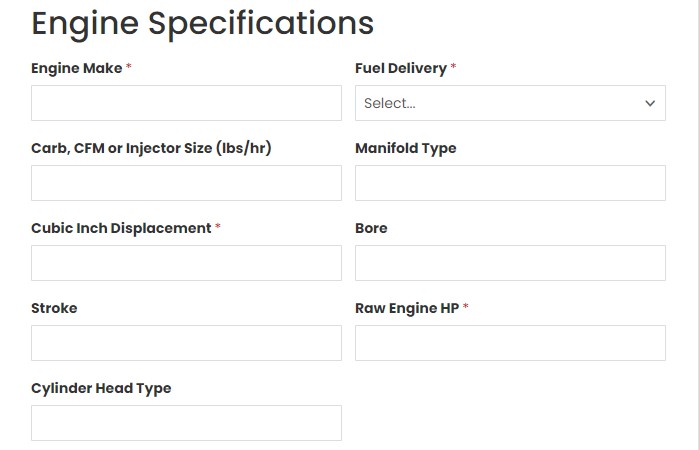
The goal of this section is information you probably should already have whittled down before arriving at the transmission stage. Still, you can ballpark most of these figures if you don’t go wildly different. How stout the engine is will determine how sturdy the transmission needs to be. The type of fuel delivery will inform the tech about the manners and adjustability of the engine, while Engine Raw HP is the big-ticket item in this section. By the way, “Cylinder Head Type” is the type of material: iron, steel, or aluminum.
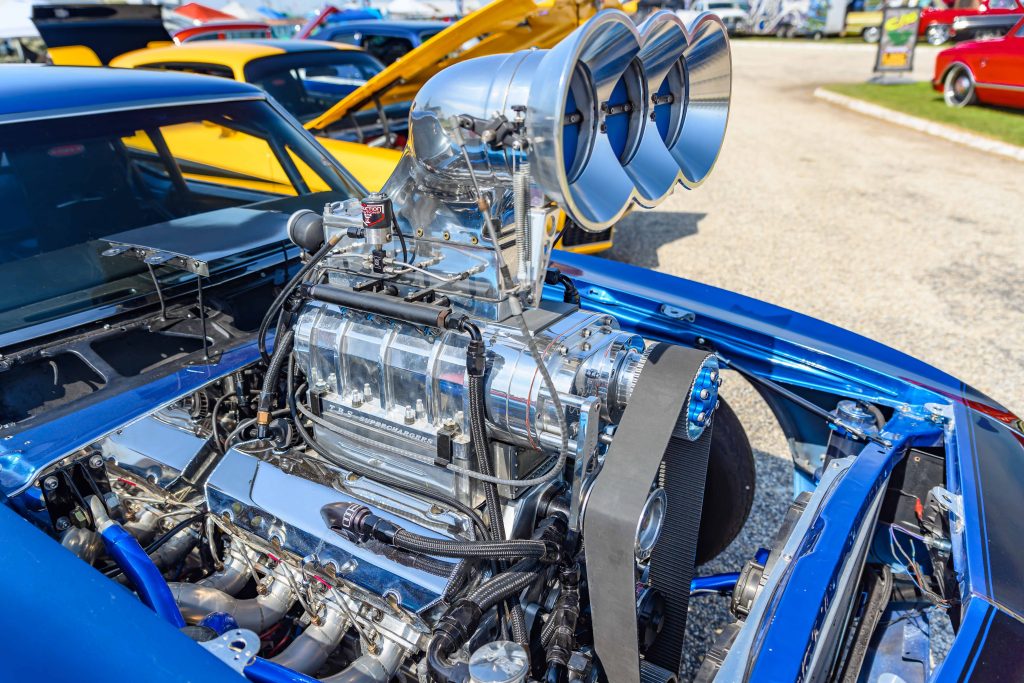
Head Flow Rate (CFM)
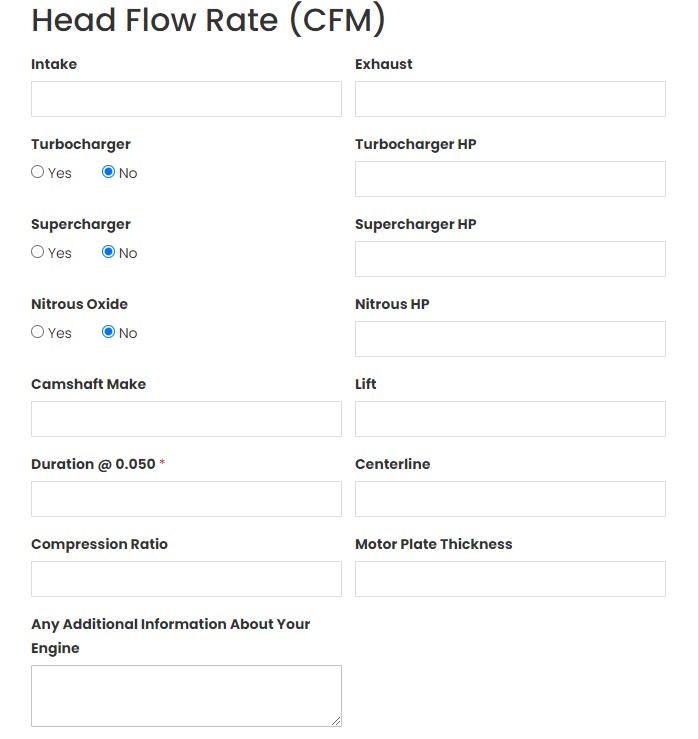
The heads determine how the engine makes its power and where in the RPM range. Remembering that an engine is just a big air pump, the goal is to force as much in as possible, light it, and force it out. Power adders are a great way to do that, but they also change where the power comes in.
Nitrous, superchargers, and turbos all react in different ways. They can all bring the boost in virtually from the hit. However, in the case of nitrous and turbos, the power can be programmed to come in over a given range or in stages.

The camshaft is a big factor too. It controls the air movement. The centerline, lift, and duration all determine when air is coming in and going out. It can all be changed by advancing or retarding the timing as well. Lastly, the compression ratio will dictate how tightly the air is packed before ignition. These all go into the calculations to get the correct transmission for the application at hand.
Current Driveline Specifications

Of course, this assumes you have a current driveline that you are either looking to replicate or improve on somehow. If you are building a brand-new car, then this section won’t be applicable. However, if you have a running vehicle that you are changing considerably, this is an excellent baseline from which to start. We’ll skip specifics here and explain them in the next section.
Desired Driveline Specifications
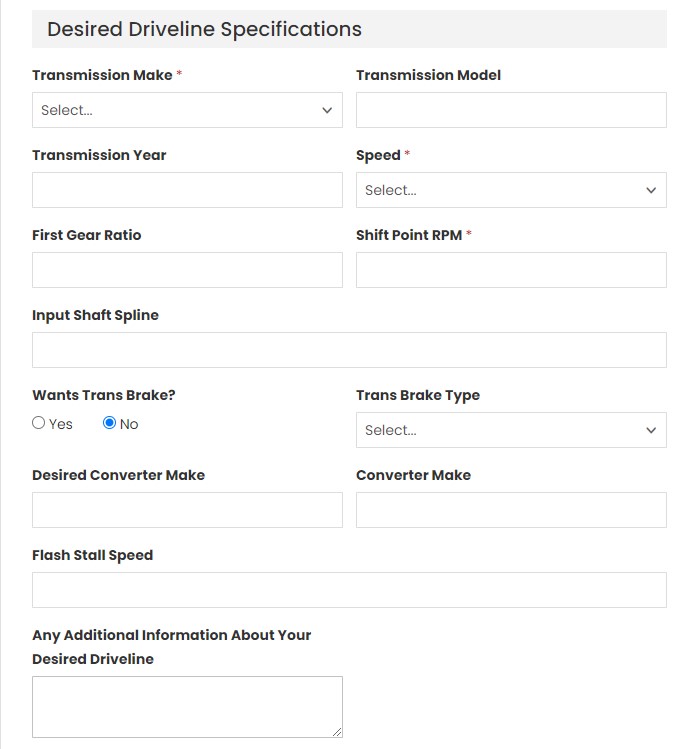
Now we’re to the heart of what you’re trying to accomplish! The transmission of your dreams awaits. (Well, ok, there will be some phone calls in between from a TCI tech to verify everything to make sure you get what you need, but you get the idea). This is where you fill out what you want in a new transmission and torque converter. As we said above, a transmission should be tailored to your needs. So, you’ll really want to think about the overall purpose of your build. Are you drag racing? Are you towing? Are you autocrossing? Are you looking for a street cruiser? These are all things you need to consider.
Transmission Make/Model/Year/Speed
Are you looking for a Ford, Chevy, Or Chrysler? You can go to the Transmissions page on TCI’s website and peruse the considerable inventory of transmission types they offer for the big three. From there, you can determine all four of these parameters. Make, model, and year are largely determined by the type of engine you are running and whether you want overdrive or not. “Speed” is not how fast you want to go but the number of gears you want. Choose from two to six.
First Gear Ratio/Shift Point RPM
These two fields will determine how your car shifts. Do you want your car to come out of the hole quickly? If so, you will want a short-geared first gear. If you are new to ordering a transmission, you can leave the First Gear Ratio field blank or simply state Tall or Short.
Shift point RPM is going to be a personal preference. You may want an early shifting transmission to keep the RPM lower and the shifts occurring less noticeably. Depending on the shift kit, the higher the shift point RPM, the more drastic the transition will be. So, if you don’t want to knock your teeth out, you’ll want to be conservative here.
Input Shaft Spline/Trans Brake/Converter Make/Flash Stall Speed
The flywheel will determine the input shaft spline. If you want a trans brake, you will check yes and then hit the dropdown arrow to decide whether or not you want a Pro-Tree or Full-Tree style trans brake. The converter make is up to you, but TCI offers a converter for just about any application, so why not order everything together?
Stall speed is a subject that can confuse folks, but it isn’t too tricky. Stall speed is the RPM a torque converter needs to spin to overcome a given load and begin moving the turbine. There are two ways to measure stall — “Flash Stall” and “Foot-Brake Stall.” TCI wants to know about the Flash Stall.
Flash stall is more accurate and is measured from a dead stop. While watching the tach, you floor the gas (in a safe place, of course) until the car moves. The RPM when the car starts to move is the Flash Stall.
On the other hand, Foot-Brake Stall is performed by holding the brake pedal to the floor at idle and stepping on the gas pedal. The RPM when the car starts to edge forward is the Foot-Brake Stall. It is not as accurate because it depends on too many variables (i.e., type of braking system, disc or drum brakes, how well adjusted the brake system is, idle characteristics of the engine, type of cam installed, etc.). Ring and pinion ratios also affect foot-brake stall more dramatically.
Additional Information
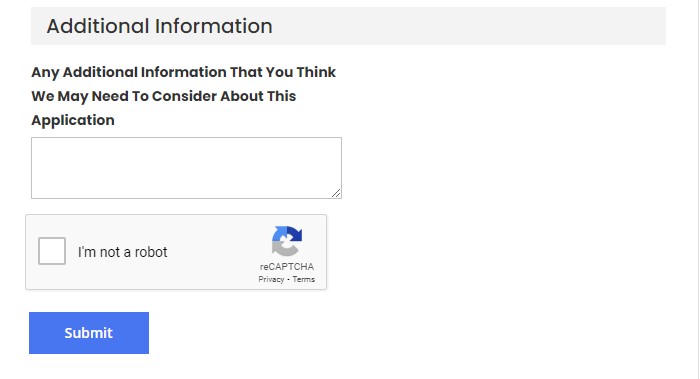
The recommendation form has two areas for additional information at the bottom. Use these fields to give all the information you can that will help a technician help you. The more information they know about your build, the better the outcome. Don’t worry, they will still call and talk to you, but this gives them a better starting point. The more information you can provide them ahead of time, the more time you will save yourself.
After that, just click on the “I’m not a robot” box to keep the spammers away. Next, click the submit button to send it off to a TCI Specialist, who will review the form and contact you to discuss your needs and wants.
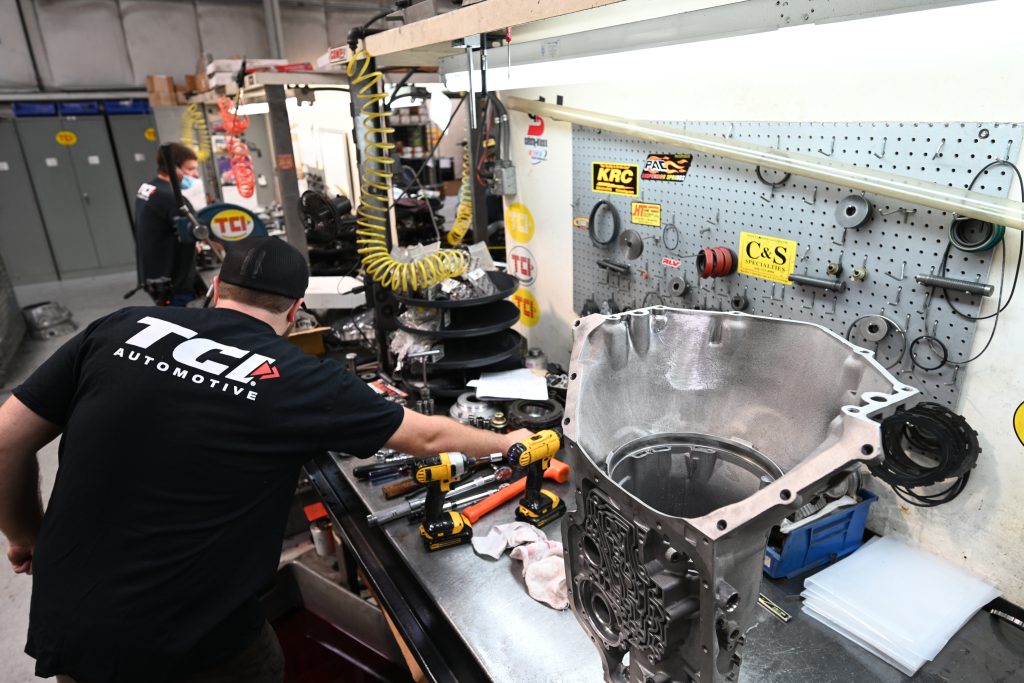
Conclusion
Buying a transmission or torque converter can seem daunting at times (especially if you’ve never done it), but TCI Specialists do this day in and day out. They will take the time to help you through the process and get the best transmission that fits your application. You just need to be prepared by knowing your build.
Make sure you are ordering the transmission early enough in the process to be able to measure where everything needs to go, especially if you haven’t installed floors and the tunnel. The last thing you want to do is have to cut into a brand-new tunnel that you just installed. Think ahead and save yourself time and aggravation. Hopefully, this little tutorial on the Recommendation Form will get you well on your way to having the car of your dreams!
